Argentina is a mainly Catholic country, with a rich history and tradition of religious worship. The churches in Buenos Aires reflect this heritage and are a must-visit for anyone interested in history, architecture, or religious landmarks. In this complete guide, we will explore the best churches in Buenos Aires, including their historical significance, architectural features, and why they are worth a visit.
Key Takeaways:
- Discover the historical and architectural beauty of the churches in Buenos Aires.
- Experience the spiritual ambiance and cultural heritage of Argentina.
- Explore colonial treasures, Neo-Gothic marvels, and hidden gems.
- Respect dress codes and photography guidelines when visiting the churches.
- Immerse yourself in the cultural heritage of Buenos Aires and create unforgettable memories.
Basilica of Pilar: A Glimpse into Buenos Aires’ Colonial Past
The Basilica of Pilar, located in Buenos Aires, is a captivating architectural gem that offers a glimpse into the city’s rich colonial past. This historic church stands as a testament to the colonial architecture prevalent during the early years of Buenos Aires’ development.
Step inside the basilica, and you’ll be transported back in time. The baroque interior with its ornate details and original features showcases the craftsmanship of the era. The Basilica of Pilar also houses historic cloisters that display an impressive collection of artworks, including oils, books, and liturgical robes, providing a deeper understanding of the church’s history and cultural significance.
Situated near the Recoleta Cemetery, the Basilica of Pilar is not only a place of worship but also a gateway to the vibrant culture of Buenos Aires. Surrounding the basilica, you’ll find lively bars, restaurants, and a bustling market on weekends, allowing visitors to immerse themselves in the vibrant atmosphere of the city while exploring its colonial heritage.
| Key Features | Details |
|---|---|
| Architecture | Colonial-style with baroque interior |
| Artworks | Historic cloisters showcasing oils, books, and liturgical robes |
| Location | Close proximity to Recoleta Cemetery and vibrant bars, restaurants, and market |
Historical Significance
The Basilica of Pilar holds immense historical importance as the second oldest church in Buenos Aires. Its establishment dates back to the early 18th century, making it an integral part of the city’s colonial history. As you explore the basilica’s intricate architecture and artifacts, you’ll gain a deeper appreciation for the role it played in the development of Buenos Aires.
Visiting the Basilica of Pilar is a rewarding experience that combines architectural splendor with a journey through Buenos Aires’ colonial past. Whether you’re an architecture enthusiast, a history buff, or simply seeking a cultural immersion, this historic church is a must-visit destination during your time in Buenos Aires.
Also read about: Complete Guide about Chacarita Neighborhood
Experience the captivating charm of the Basilica of Pilar, delve into Buenos Aires’ colonial past, and immerse yourself in the vibrant atmosphere of this historic neighborhood.
San Isidro Cathedral: A Neo-Gothic Marvel
The San Isidro Cathedral, located in the picturesque barrio of San Isidro, is a true architectural gem that showcases stunning Neo-Gothic design. With its red and white facade, stone walls, and intricate stained-glass windows crafted in France, this cathedral is a visual delight for visitors.
The Neo-Gothic style of the San Isidro Cathedral is characterized by its pointed arches, ribbed vaults, and ornate decorations. The use of these architectural elements creates a sense of height and grandeur, making the cathedral an impressive sight both inside and out. The stained-glass windows, with their vibrant colors and intricate designs, allow natural light to fill the space, creating a serene and ethereal atmosphere for worship and contemplation.
In addition to its architectural beauty, the San Isidro Cathedral holds historical significance as it accompanied the foundation of the city of San Isidro. Its declaration as a “National Historical Place” further highlights its cultural importance and attracts visitors who appreciate the historical and architectural value of the cathedral.
Also read about: METROPOLITAN CATHEDRAL in Buenos Aires
Visiting the San Isidro Cathedral
When visiting the San Isidro Cathedral, take the time to explore both the exterior and interior of the building. Marvel at the intricate details of the Neo-Gothic architecture and take in the vibrant colors of the stained-glass windows. Be sure to also explore the peaceful surroundings of the cathedral, including the charming streets of the San Isidro neighborhood.
Whether you are a religious pilgrim, an architecture enthusiast, or simply someone who appreciates beauty, a visit to the San Isidro Cathedral is a must. Experience the Neo-Gothic marvel for yourself and immerse yourself in the serenity and splendor of this historic and cultural landmark.
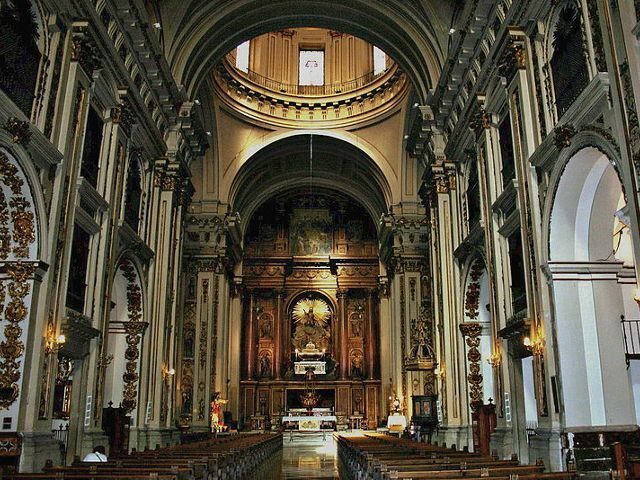

| Features | Description |
|---|---|
| Architectural Style | Neo-Gothic |
| Exterior | Red and white facade, stone walls |
| Interior | Stained-glass windows, pointed arches, ribbed vaults |
| Historical Significance | Accompanied the foundation of the city of San Isidro |
| Declaration | “National Historical Place” |
Basilica del Luján: A Symbol of Faith and Pilgrimage
The Basilica del Luján, located 60 kilometers from Buenos Aires, holds a special place in the hearts of the Argentinian people. It serves as a symbol of faith and pilgrimage, attracting thousands of devotees each year. This magnificent basilica is dedicated to the Virgin Luján, who is considered the patroness of Argentina. The annual pilgrimage to the Basilica del Luján is a significant event for many, as they seek blessings and offer prayers for their families, jobs, and good health.
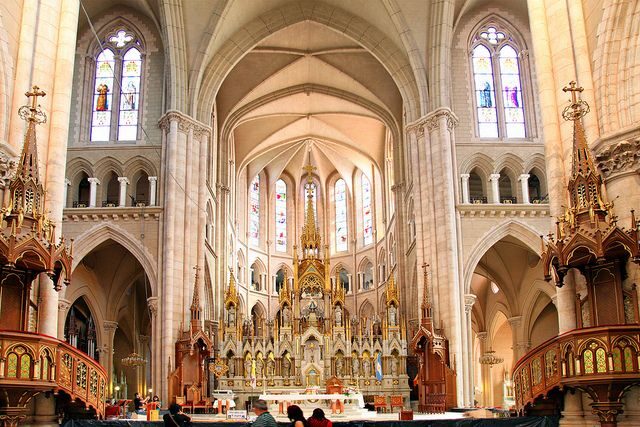

The history of the Basilica del Luján is rooted in a legendary tale that dates back to the early 17th century. According to the story, a small statue of the Virgin Mary was being transported to Luján from Brazil when the cart carrying it became stuck in the mud. Despite multiple attempts to move the cart, it remained immobile until the statue was placed on the ground. This miraculous event was seen as a sign, and a chapel was later built to honor the Virgin Luján.
Today, the Basilica del Luján stands as a testament to the enduring faith of the Argentinian people. Its grandeur and architectural beauty draw visitors from all over the world. The basilica features elaborate Neo-Gothic design elements, including intricate stained-glass windows and towering spires. Inside, visitors can admire the ornate altar and experience a sense of tranquility and reverence.
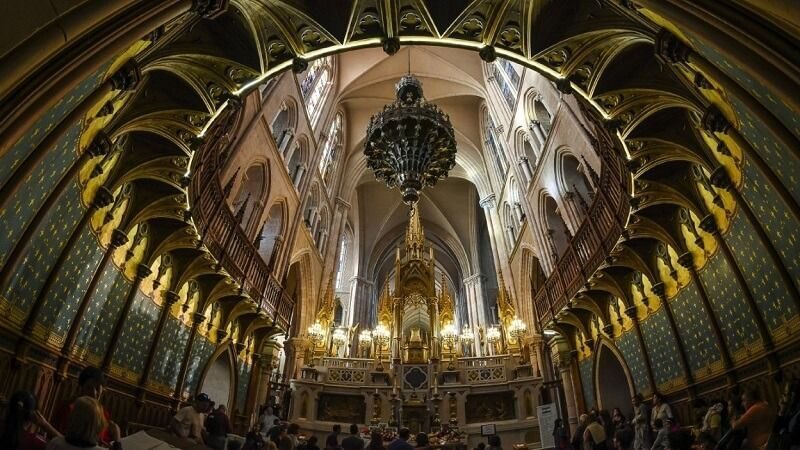

The annual pilgrimage: A deeply spiritual experience
The pilgrimage to the Basilica del Luján is a powerful and emotional journey for the participants. Many choose to walk the 60-kilometer distance from Buenos Aires to Luján as an act of devotion and penance. Along the way, they reflect on their faith, offer prayers, and find solace in the presence of fellow pilgrims. The pilgrimage culminates in a Mass at the basilica, where devotees express their gratitude and seek spiritual guidance.
Visiting the Basilica del Luján: A transformative experience
Even for those who do not participate in the annual pilgrimage, a visit to the Basilica del Luján can be a deeply transformative experience. The sheer size and beauty of the basilica, combined with the devotion and faith that permeate the air, create a sense of awe and reverence. Whether you are a religious person or simply appreciate the cultural significance of this pilgrimage site, a visit to the Basilica del Luján is sure to leave a lasting impression.
| Key Features | Details |
|---|---|
| Location | Luján, 60 kilometers from Buenos Aires |
| Architectural Style | Neo-Gothic |
| Significance | Devoted to the Virgin Luján, patroness of Argentina |
| Pilgrimage | Annual pilgrimage attracts thousands of devotees |
La Plata Cathedral: An Architectural Wonder with a View
The La Plata Cathedral, situated in the center of La Plata, is a magnificent example of Neo-Gothic architecture that is sure to leave visitors in awe. With its striking red facade and grandeur, this cathedral stands as one of the largest in the world and is a testament to the city’s rich architectural heritage. But the splendor doesn’t end there. The La Plata Cathedral offers a unique experience with its elevator that takes visitors up to a viewpoint 63 meters high, providing panoramic views of the city, the square, and the river.
Also read about: La Plata Buenos Aires Day Trip
Stepping inside the cathedral, visitors are greeted with a sense of reverence and tranquility. The intricate details of the stained-glass windows, crafted in France, cast a colorful glow on the interior, creating a breathtaking sight. The La Plata Cathedral also houses an interesting museum where permanent exhibitions showcase the construction of the temple and explore various religious themes. It’s an opportunity to delve deeper into the history and significance of this architectural masterpiece.
Table: La Plata Cathedral Highlights
| Feature | Description |
|---|---|
| Neo-Gothic Architecture | The La Plata Cathedral showcases stunning Neo-Gothic design, with its soaring spires and intricate stone detailing. |
| Museum | The cathedral houses a museum where visitors can explore permanent exhibitions featuring the temple’s construction and religious themes. |
| Viewpoint | An elevator takes visitors up to a viewpoint 63 meters high, offering panoramic views of the city, the square, and the river. |
The La Plata Cathedral is not only an architectural wonder but also a place of spiritual significance. It serves as the seat of the Archbishop of La Plata and holds regular religious services. Whether you’re a lover of architecture, a history enthusiast, or simply seeking a moment of peace and reflection, a visit to the La Plata Cathedral is a must during your time in Buenos Aires.
Metropolitan Cathedral: A Religious and Historical Landmark
The Metropolitan Cathedral, located in the heart of Buenos Aires, is the head office of the Argentine Catholic Church and holds significant historical and religious importance. This magnificent cathedral, with its stunning architecture, is a must-visit for anyone interested in the cultural heritage of Buenos Aires.
The Metropolitan Cathedral is not only an architectural marvel but also a place of great historical significance. It served as the place of worship for Argentina’s founding fathers and witnessed important events in the country’s history. It is also home to the Cardenal Jorge Mario Bergoglio museum, dedicated to Pope Francis. The museum exhibits a collection of items from his time as the Archbishop of Buenos Aires, providing visitors with insights into the life and legacy of this influential figure.
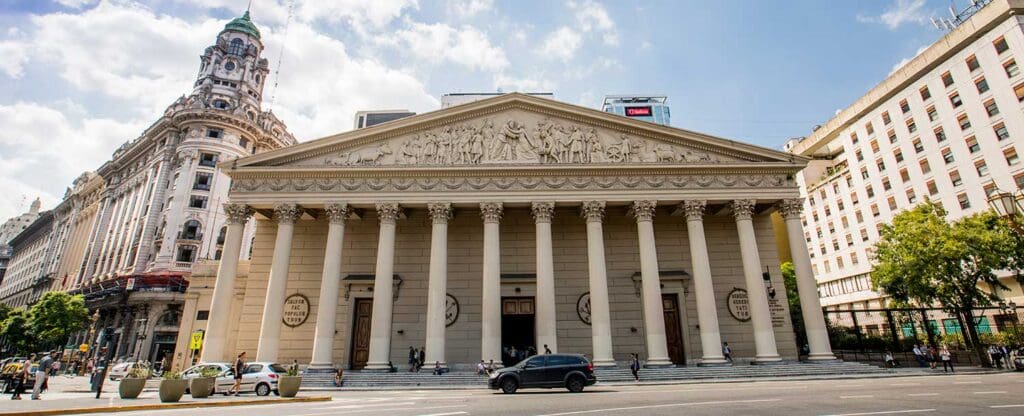

Guided visits and audio guides are available to help visitors gain a deeper understanding of the cathedral’s history and religious significance. The Metropolitan Cathedral offers a serene and peaceful atmosphere for quiet reflection and contemplation. Visitors can admire the beautiful stained-glass windows, intricate sculptures, and ornate altars that adorn this sacred space.
Exploring the Metropolitan Cathedral
A visit to the Metropolitan Cathedral is an opportunity to explore the rich history and religious traditions of Argentina. The cathedral’s central location in Buenos Aires makes it easily accessible for tourists and locals alike. As the center of Catholicism in Argentina, it holds a special place in the hearts of many who come to seek solace, offer prayers, and connect with their faith. Whether you are religious or not, a visit to the Metropolitan Cathedral is a chance to appreciate the beauty of its architecture and learn about the cultural heritage of Buenos Aires.
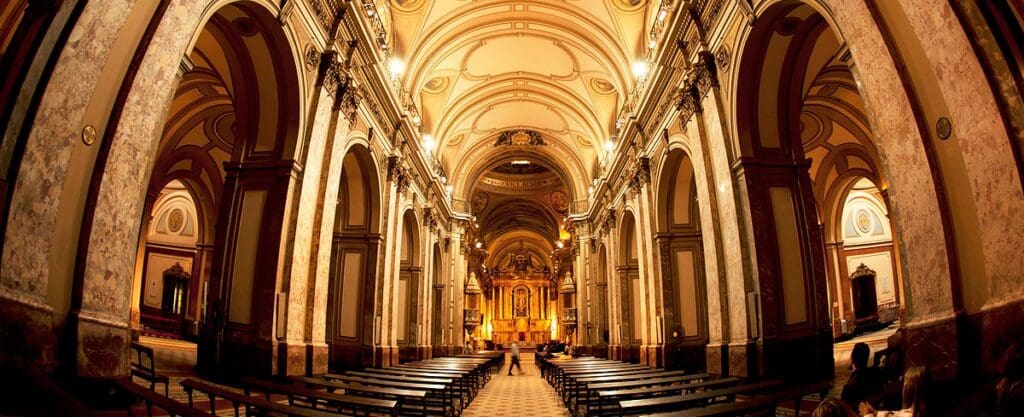

Table: Comparison of Key Features
| Feature | Metropolitan Cathedral | Other Churches in Buenos Aires |
|---|---|---|
| Location | Heart of Buenos Aires | Varying locations across the city |
| Architectural Style | Neo-Gothic | Varies depending on the church |
| Historical Significance | Served as the place of worship for Argentina’s founding fathers | Varies depending on the church |
| Museum | Cardenal Jorge Mario Bergoglio museum, dedicated to Pope Francis | Varies depending on the church |
| Accessibility | Centrally located | Varying levels of accessibility across churches |
As seen in the table above, the Metropolitan Cathedral stands out for its central location, historical significance, and the presence of the Cardenal Jorge Mario Bergoglio museum. While each church in Buenos Aires offers its own unique charm and beauty, the Metropolitan Cathedral is a must-visit for its religious and cultural significance.
Spanish courses available in Malaga, Buenos Aires, or accessible online.
Catedral Primada: A Historic Landmark in San Nicolás
The Catedral Primada, located in the charming San Nicolás neighborhood, is a historic landmark that captures the essence of Buenos Aires’ rich cultural heritage. This magnificent cathedral stands tall with its impeccable architecture, embodying the city’s religious and architectural legacy. One of the highlights of a visit to the Catedral Primada is the remarkable choir performances accompanied by the majestic organ. The harmonious melodies fill the cathedral’s grand space, creating a truly enchanting atmosphere.
In addition to the heavenly music, visitors can witness the captivating spectacle of the changing of the guard at the tomb. The ceremonial changing of the guard pays homage to the historical significance associated with the cathedral and adds a touch of grandeur to the overall experience. The intricate details of the cathedral’s architecture and its awe-inspiring grandeur make it a must-visit attraction for anyone seeking to immerse themselves in Buenos Aires’ rich religious and architectural heritage.
The Beauty of Catedral Primada
The Catedral Primada, with its stunning facade and exquisite interior design, is a true architectural gem. Its magnificent columns, towering ceilings adorned with ornate artwork, and intricate stained-glass windows create an atmosphere of reverence and awe. The grandeur of the cathedral is enhanced by the natural light that filters through the windows, casting colorful hues and illuminating the sacred space.
As visitors wander through the Catedral Primada, they will encounter numerous chapels, each with its own unique design and religious significance. These chapels house beautiful altarpieces, religious statues, and intricate relics that showcase the rich history and devotion of the Argentine people. The solemn beauty and spiritual ambiance of the Catedral Primada make it a truly unforgettable destination for those seeking a deeper connection to Buenos Aires’ cultural and religious heritage.
| Experience | Table |
|---|---|
| Choir and Organ | Immerse yourself in the heavenly choir performances accompanied by the majestic organ, creating a truly enchanting atmosphere. |
| Changing of the Guard | Witness the captivating spectacle of the changing of the guard at the tomb, adding a touch of grandeur to the overall experience. |
| Architectural Beauty | Marvel at the stunning facade, towering columns, ornate artwork, and intricate stained-glass windows that adorn the cathedral. |
| Historical Significance | Explore the chapels that showcase unique designs, religious statues, beautiful altarpieces, and intricate relics. |
Iglesia de San Ignacio de Loyola: The Oldest Catholic Church in Buenos Aires
The Iglesia de San Ignacio de Loyola holds the distinction of being the oldest Catholic church in Buenos Aires. With a rich historical significance, this iconic church offers visitors a glimpse into the early Catholic roots of the city. Built in the 17th century by the Society of Jesus, the church showcases a blend of architectural styles, including Baroque and Neoclassical elements.
Stepping inside the Iglesia de San Ignacio de Loyola, visitors are greeted by a serene and sacred atmosphere. The interior is adorned with intricate carvings, ornate altars, and beautiful stained-glass windows. The church has witnessed significant events throughout history, such as the country’s declaration of independence in 1816, adding to its cultural importance.
Located in the heart of downtown Buenos Aires, the Iglesia de San Ignacio de Loyola is easily accessible for those exploring the city. Whether you’re a history enthusiast, an architecture lover, or simply seeking a spiritual experience, a visit to this historic church is a must during your time in Buenos Aires.
Also read about: Emblematic Churches to Visit in Buenos Aires
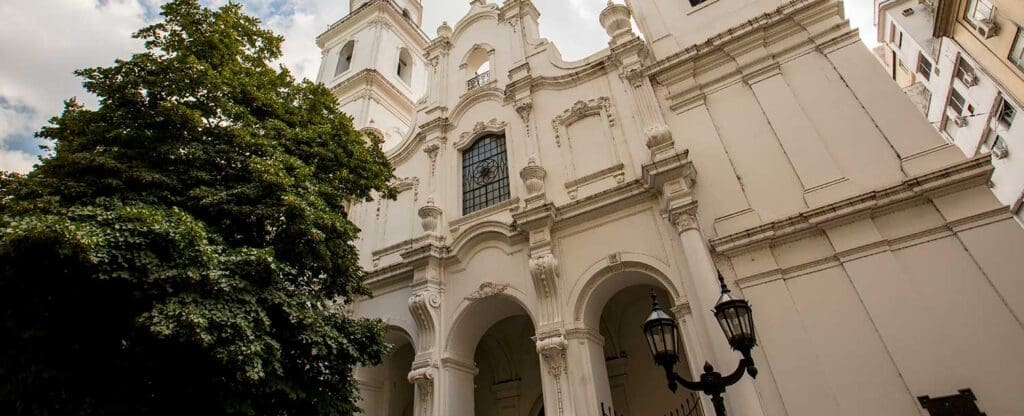

| Key Highlights | Details |
|---|---|
| Oldest Catholic Church in Buenos Aires | Built in the 17th century |
| Architectural Styles | Baroque and Neoclassical |
| Historical Significance | Witnessed Argentina’s declaration of independence |
| Location | Downtown Buenos Aires |
Other Noteworthy Churches in Buenos Aires
In addition to the notable churches mentioned above, Buenos Aires is home to several other noteworthy churches that deserve recognition. These hidden gems showcase unique architectural styles and hold cultural significance, adding to the diverse religious landscape of Buenos Aires. Here are some of these churches:
- Basílica del Santísimo Sacramento: Built in the 20th century, this church features a mix of Gothic and Art Nouveau architectural styles. Its stunning stained glass windows and intricate stone carvings make it a true architectural beauty.
- Basilica Maria Auxiliadora y San Carlos: Located in the Almagro neighborhood, this church is known for its beautiful frescoes and unique blend of Italian and Argentine architectural styles. It is a hidden gem tucked away from the bustling streets, offering a peaceful and serene atmosphere.
- Iglesia de San Ignacio de Loyola: While the name may sound familiar, this church is a different one from the oldest Catholic church mentioned earlier. This lesser-known gem boasts exquisite Baroque architecture and is home to beautiful artworks and altarpieces.
These churches offer visitors the opportunity to explore the lesser-known architectural wonders of Buenos Aires and delve deeper into the city’s religious heritage. Whether you’re a history enthusiast, an architecture lover, or simply seeking a unique cultural experience, these hidden gem churches are well worth a visit.
Table: Comparison of Other Noteworthy Churches in Buenos Aires
| Church | Architectural Style | Location | Notable Features |
|---|---|---|---|
| Basílica del Santísimo Sacramento | Gothic and Art Nouveau | Palermo neighborhood | Stained glass windows, stone carvings |
| Basilica Maria Auxiliadora y San Carlos | Italian and Argentine blend | Almagro neighborhood | Frescoes, peaceful atmosphere |
| Iglesia de San Ignacio de Loyola | Baroque | Montserrat neighborhood | Artworks, altarpieces |
Visiting these churches will allow you to discover the hidden beauty of Buenos Aires’ religious architecture and gain a deeper appreciation for the city’s rich cultural heritage. Remember to add these hidden gems to your itinerary when exploring the churches of Buenos Aires.
Tips for Visiting Churches in Buenos Aires
When visiting the churches in Buenos Aires, it’s important to keep a few tips in mind to ensure a pleasant and respectful experience. Here are some guidelines to follow:
- Dress modestly: As these churches are places of worship, it is advisable to dress modestly and respectfully. Avoid wearing revealing or inappropriate clothing. Some churches may have specific dress codes, especially if you plan to enter the main prayer area, so it’s always a good idea to check beforehand.
- Photography guidelines: While capturing the beauty of these churches is tempting, it’s essential to be mindful of photography guidelines. Some churches may have restrictions or guidelines in place for taking photos inside. Always respect these rules and ask for permission if necessary. Remember, the primary purpose of your visit is to appreciate the spiritual and architectural splendor of the churches.
- Be mindful of the sacred space: When inside the churches, it’s important to maintain a respectful and quiet demeanor. These places are sacred to those who worship there, so keep conversations to a minimum and avoid any disruptive behavior. Silence your cell phone and refrain from eating or drinking inside.
- Follow guided tours and audio guides: To enhance your understanding of the churches’ history and significance, consider joining guided tours or making use of audio guides if available. These resources provide valuable insights and enrich your overall experience.
By following these tips, you can enjoy a memorable and respectful visit to the churches in Buenos Aires while appreciating their spiritual and architectural beauty.
| Tips for Visiting Churches in Buenos Aires |
|---|
| Dress modestly |
| Photography guidelines |
| Be mindful of the sacred space |
| Follow guided tours and audio guides |
Expert Spanish teachers from Buenos Aires, Spanish teachers from Malaga or also offering online instruction.
Experience the Spiritual and Architectural Splendor of Buenos Aires’ Churches
The churches of Buenos Aires offer a truly enchanting experience, combining spiritual and architectural splendor. Each church tells a unique story, showcasing the rich religious and cultural heritage of Argentina. From the colonial treasures of the Basilica of Pilar to the grandeur of the Metropolitan Cathedral, these churches are a testament to the city’s past and present.
Step into the Basilica of Pilar, one of the oldest churches in Buenos Aires, and be transported to the colonial era. Marvel at its well-preserved baroque architecture and explore the historic cloisters adorned with exquisite artworks. This church offers a glimpse into Buenos Aires’ colonial past and is surrounded by a vibrant atmosphere of bars, restaurants, and a lively market on weekends.
Journey to the San Isidro Cathedral and be captivated by its stunning Neo-Gothic architecture. The cathedral’s red and white facade, intricate stained-glass windows, and stone walls make it a visual delight. This national historical landmark is situated in the picturesque barrio of San Isidro, offering visitors a peaceful atmosphere and a chance to admire architectural beauty.
Make your way to the Basilica del Luján, a symbol of faith and pilgrimage. Located 60 kilometers from Buenos Aires, this basilica holds great significance as the destination of an annual pilgrimage dedicated to the patroness of Argentina, the Virgin Luján. The grandeur of this site and its rich history make it a must-see for those seeking a spiritual experience.
Immerse yourself in the spiritual ambiance and architectural wonders of Buenos Aires’ churches. Explore the diverse range of styles, from colonial to Neo-Gothic, and discover the stories behind these iconic landmarks. Whether you are drawn to religious traditions, historical significance, or simply the beauty of architecture, visiting the churches of Buenos Aires is a unique and unforgettable experience.
Buenos Aires’ Churches: A Brief Overview
Here is a summary of the churches featured in this guide:
| Church | Architecture | Historical Significance | Highlights |
|---|---|---|---|
| Basilica of Pilar | Colonial | Second oldest church in Buenos Aires | Baroque interior, historic cloisters |
| San Isidro Cathedral | Neo-Gothic | Accompanied the foundation of San Isidro | Stained-glass windows from France |
| Basilica del Luján | Various styles | Annual pilgrimage site | Symbol of faith, grandeur |
Conclusion
The churches of Buenos Aires showcase the rich religious and cultural heritage of Argentina. With their stunning architecture, historical significance, and spiritual ambiance, these churches provide visitors with a unique glimpse into the city’s past and present. From the colonial charm of the Basilica of Pilar to the grandeur of the Metropolitan Cathedral, each church has its own story to tell and offers a truly unforgettable experience.
Whether you’re seeking architectural beauty, a spiritual retreat, or a deeper understanding of Buenos Aires’ religious traditions, exploring the best churches of Buenos Aires is a must for any visitor. Immerse yourself in the cultural heritage of the city, marvel at the intricate details of the architecture, and experience the peaceful atmosphere that surrounds these sacred spaces.
Discover the colonial treasures, Neo-Gothic marvels, and hidden gems that await you in the churches of Buenos Aires. Let the beauty and spirituality of these iconic landmarks leave a lasting impression on your journey through this vibrant city. Whether you are a history enthusiast, an architecture lover, or simply seeking a moment of tranquility, the churches of Buenos Aires offer a truly unique and enriching experience.



